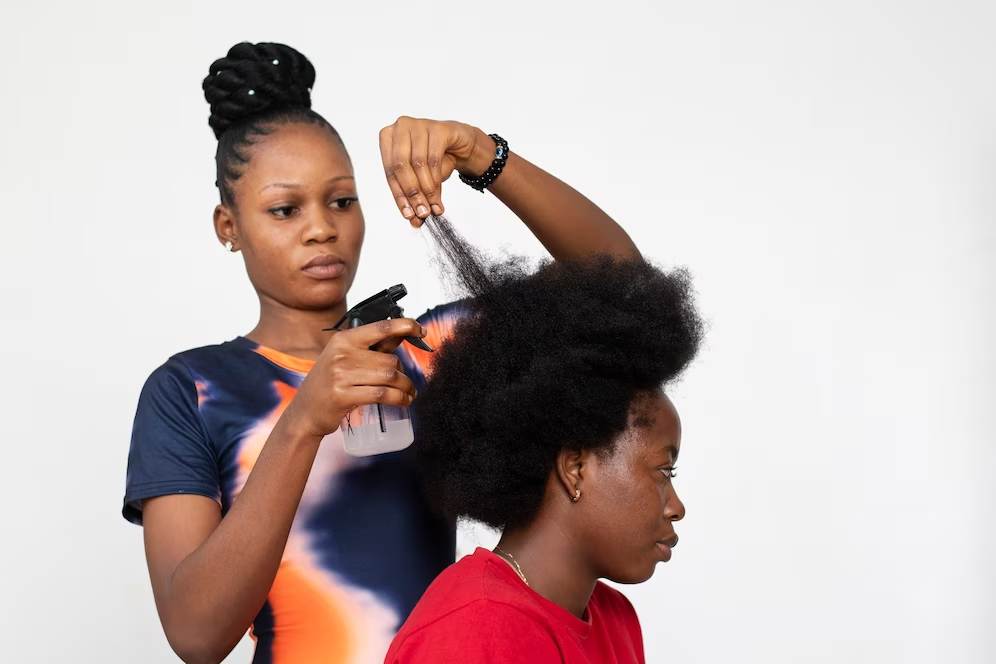Health Concerns Related To Synthetic Hair Braids In The Black Community

Table of Contents
Traction Alopecia and Hair Loss from Tight Braiding
Understanding Traction Alopecia
Traction alopecia is a form of hair loss caused by prolonged, excessive pulling on the hair. With synthetic hair braids, the tight braiding techniques often employed can place significant tension on the hair follicles. This constant tension leads to inflammation and, over time, damage to the hair follicles, resulting in hair thinning, breakage, and eventually, permanent hair loss.
Symptoms of traction alopecia include:
- A receding hairline
- Scalp tenderness
- Thinning hair, particularly along the hairline or at the temples
- Visible breakage or damaged hair shafts
Preventing traction alopecia requires employing loose braiding techniques and incorporating regular breaks from tightly braided styles.
The Prevalence of Traction Alopecia in the Black Community
The cultural significance of specific hairstyles within the Black community often leads to prolonged periods of wearing tight braids, increasing the risk of traction alopecia. Studies have shown a higher prevalence of traction alopecia among Black women compared to other demographics, highlighting the urgent need for awareness and preventative measures. Societal pressures and beauty standards often influence hairstyle choices, contributing to this disparity. This necessitates a shift towards prioritizing healthy hair practices over rigid adherence to specific beauty trends.
Scalp Infections and Irritation from Synthetic Hair Materials
Allergic Reactions and Irritant Contact Dermatitis
Synthetic hair used in braids is often made from materials like Kanekalon, nylon, or acrylic fibers. These materials can trigger allergic reactions or irritant contact dermatitis in some individuals. Symptoms can range from mild itching and redness to severe swelling, scalp sores, and even blistering. Choosing high-quality, hypoallergenic synthetic hair can significantly reduce the risk of these reactions.
Bacterial and Fungal Infections
Braids, especially those left in for extended periods, create a warm, moist environment that is conducive to bacterial and fungal growth. This can lead to infections like folliculitis (inflammation of the hair follicles) and tinea capitis (ringworm). Maintaining proper scalp hygiene is crucial to prevent these infections. This includes:
- Regularly washing the scalp with a gentle, sulfate-free shampoo.
- Using an antimicrobial shampoo as needed.
- Ensuring the scalp remains clean and dry.
- Removing braids promptly if signs of infection appear.
Damage to Natural Hair from Chemical Treatments and Heat Styling
Chemical Relaxers and Weaves
Many individuals use chemical relaxers to straighten their natural hair before braiding synthetic extensions. Chemical relaxers weaken the hair shaft, making it more susceptible to breakage and damage. The added tension from tight braids can further exacerbate this damage. Combining chemical relaxing with synthetic braids significantly increases the risk of severe hair loss and scalp damage.
Heat Styling Before Braiding
Applying heat to the hair before braiding, for example, using a flat iron or curling iron, further compromises its integrity. This heat styling, coupled with the tension of tight braids, can lead to cumulative damage that weakens the hair and increases susceptibility to breakage. Allow your hair adequate time to rest and recover between heat styling sessions. Consider gentle, heat-free styling methods as alternatives.
Managing and Preventing Health Risks Associated with Synthetic Hair Braids
Choosing a Qualified Stylist
Selecting an experienced and qualified braider who prioritizes scalp health is paramount. A skilled stylist will use appropriate braiding techniques to minimize tension on the hair and scalp. Look for stylists who:
- Are knowledgeable about scalp health and potential risks.
- Use gentle braiding techniques.
- Advise on proper hair care routines.
Proper Hair Care Practices
Maintaining good scalp hygiene is vital when wearing synthetic braids. This includes:
- Regularly washing the scalp and hair with a gentle, moisturizing shampoo.
- Deep conditioning the hair at least once a week.
- Gently massaging the scalp to stimulate blood flow.
- Avoiding harsh chemicals and products.
Taking Breaks from Braids
Allowing the scalp and hair to rest and recover between braid installations is crucial. Consider protective hairstyles like loose braids, twists, or updos during these breaks.
Conclusion
Synthetic hair braids, while stylish, carry potential health risks, including traction alopecia, scalp infections, and damage from chemical treatments and heat styling. These risks disproportionately affect the Black community due to cultural preferences and societal pressures. By understanding these potential health concerns and prioritizing responsible practices, such as choosing skilled stylists, maintaining proper hygiene, and incorporating regular breaks from braids, you can enjoy the beauty of synthetic hair braids while safeguarding your scalp and hair health. Learn more about protecting your hair and choosing healthy hairstyles with synthetic hair braids—your health and well-being are paramount.

Featured Posts
-
 Crystal Palace Target Emanuel Emegha Summer Transfer Rumours
May 27, 2025
Crystal Palace Target Emanuel Emegha Summer Transfer Rumours
May 27, 2025 -
 High Quality Photos Taylor Swifts Eras Tour Wardrobe
May 27, 2025
High Quality Photos Taylor Swifts Eras Tour Wardrobe
May 27, 2025 -
 Tracker Season 3 Premiere Date Episode Guide And What To Expect
May 27, 2025
Tracker Season 3 Premiere Date Episode Guide And What To Expect
May 27, 2025 -
 Where To Stream Ted On Comedy Central Hd
May 27, 2025
Where To Stream Ted On Comedy Central Hd
May 27, 2025 -
 Zelenskiy O Gneve Trampa Na Putina Reaktsiya Ukrainy
May 27, 2025
Zelenskiy O Gneve Trampa Na Putina Reaktsiya Ukrainy
May 27, 2025
